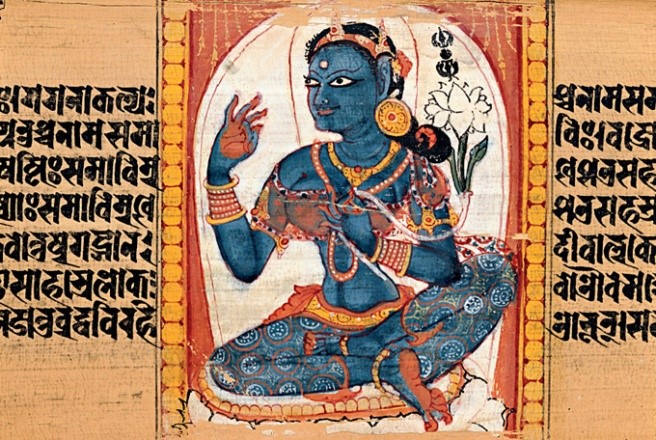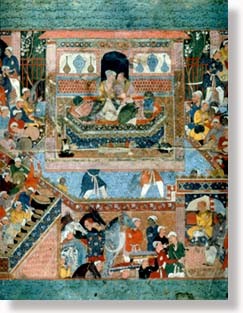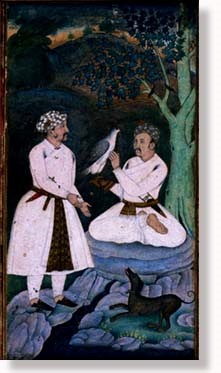Indian Miniature Painting: Evolution and Early Schools
Introduction of Paper in India
In the 12th century, paper was introduced in India, leading to the rise of illustrations on larger manuscript formats than the narrow palm leaf. The Indian miniature painting tradition can be traced back to the 9th-10th century in Buddhist Pala period palm leaf manuscripts of eastern India and Jaina palm leaf manuscripts of western India.
Mughal Empire and the New Phase of Indian Painting
With the establishment of studios at the Mughal Empire's imperial court, Indian painting began a new phase in its evolution. Illustrated manuscripts, album miniatures, portraits, celebratory or genre scenes, and other paintings made their way all over India. While Indian miniature painting was initially influenced by Persian art, Indian artists soon regained their independence and originality.
Pala School
The earliest examples of Indian miniature painting are found in the form of illustrations to religious texts on Buddhism executed under the Palas of eastern India and the Jain texts executed in western India during the 11th-12th centuries A.D. These manuscripts had images of Buddhist deities illustrated by artists at centers such as Nalanda, Odantapuri, Vikramsila, and Somarupa, where students and pilgrims from South-East Asia gathered for education and religious instruction.
The surviving examples of Pala illustrated manuscripts mostly belong to the Vajrayana School of Buddhism, characterized by a naturalistic style with sinuous lines and subdued tones of color. One of the finest examples is the manuscript of the Astasahasrika Prajnaparamita, or the Perfection of Wisdom written in eight thousand lines, housed in Oxford, England.
Colors with symbolic meanings were used in Pala paintings, and the Pala style spread to Nepal, Tibet, Burma, Sri Lanka, and Java. The Pala art came to a sudden end after the destruction of Buddhist monasteries by Muslim invaders in the first half of the 13th century. Some monks and artists escaped and fled to Nepal, reinforcing the existing art traditions there.

An example of miniature painting from Pala School of art
Mughal Paintings
The Mughal School of Painting originated during the reign of Akbar in 1560 CE with the establishment of a painting studio under the supervision of two Persian masters, Mir Sayyed Ali and Abdul Samad Khan. They were originally employed by his father Humayun. The studio recruited a large number of Indian artists from all over India to work under the Persian masters. The Mughal style evolved as a result of a happy synthesis of the indigenous Indian style of painting and the Safavid school of Persian painting, marked by supple naturalism based on close observation of nature and fine and delicate drawing.
The first work of the Mughal School was the illustrated manuscript of the Tuti-nama in the Cleveland Museum of Art (USA). The style of painting in this manuscript shows the Mughal style in its formative stage. Shortly after that, between 1564-69 CE, a very ambitious project in the form of Hamza-nama illustrations on cloth, originally consisting of 1400 leaves in seventeen volumes, was completed. Some of the famous painters in Akbar’s court other than the two Persian masters already mentioned are Dasvanth, Miskina, Nanha, Kanha, Basawan, Manohar, Doulat, Mansur, Kesu, Bhim Gujarati, etc.

A Hamza – nama illustration
Jahangir had great fascination for nature and took delight in the portraiture of birds, animals, and flowers. Some important manuscripts illustrated during his period are, an animal fable book called Ayar-i-Danish, the Anwar-i-sunavli, and another fable book. The famous painters of Jahangir are Aqa Riza, Abul Hasan, Mansur, Bishan Das, Manohar, Goverdhan, Balchand, Daulat, Mukhlis, Bhim, and Inayat.
Aurangzeb was a puritan, and painting declined during his period and lost much of its earlier quality. A large number of court painters migrated to the provincial courts. During the period of Bahadur Shah, there was a revival of the Mughal painting after the neglect shown by Aurangzeb. After 1712 CE, the Mughal painting again started deteriorating under the later Mughals.

The Portrait of Jahangir

